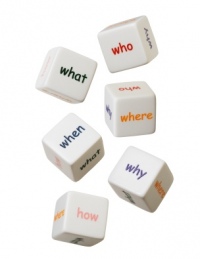Common Questions
One of the key pages of your website is the 'FAQs' or 'Common Questions' page. Used correctly this area can summarise your business effectively, reduce wasted time handling inappropriate enquiries and build confidence in your company.
When writing content for your site you need to think about your customer. They have a need for your products or services and this may be the first time they have found your business. You need to present your business to them and educate them as to why your business is the one to use.
It is often difficult to think what 'common questions' you are asked, after all you deal with so many every day, but if you think about it in terms of Who, What, When, Where, Why and How you can break it down.
Put your “customer hat” on and look at your website from their perspective and answer the following– Who, What, When, Where, Why and How. Some examples that might help your thinking are...
Who
- Who owns the business?
- Who do I call to complain?
- Who invented your product?
What
- What guarantee do you offer?
- What is your postal address?
- What makes you different?
When
- When are you open?
- When did you start in this business?
- When can I come and see you?
Where
- Where do you serve (Geographical)?
- Where is your office?
- Where did you think of the product?
Why
- Why should I choose you over your competitor?
- Why is your services / products better?
- Why do you not sell online?
How
- How do I contact you?
- How many staff do you have?
- How do you quote?
As well as the questions themselves, you need to think about the structure of the page. As a suggestion, consider grouping your questions into three main areas covering the subjects of 'Pre- Sale Questions', 'Selling Process Questions' and 'After Sales Service'. These groupings allow you to lead the customer through your processes so they understand what will happen when they buy from you or use your services.
People tend get put off by vast amounts of text. Remember on your website you are not trying to answer all their questions, you are trying to portray your expertise and build confidence. If you keep your questions well structured and the answers accurate without being too technical, people will read them. I suggest you ask the question in one sentence and answer it in two sentences with a maximum to three sentences.
Some example questions and answers
"When are you open?"
Our opening hours are Monday to Friday 8:30am to 5:00pm. If you are considering coming to our Hamilton showroom, why not make an appointment so we can give you our full attention and explain our range of widgets.
(This shows willing and open attitude, gives the needed info and also mentions products and location to aid with search engine ranking)
How do you quote?
We have an initial consultation with you where we discuss your needs and requirements. This can be held in our Hamilton office if this is more convenient for you. Following this we prepare an obligation free quote detailing how our range of widget repair services are able to assist you and includes a complete breakdown of costs and relevant brochures.
(This sets out your sales process and what the customer can expect and again mentions products and location for Search Engine weighting.)
It is a fine balance in the questions to mix a sensible answer, a positive message, search engine keywords or phrases and ensuring it all make sense. Don't be afraid to ask your customers what they think. Getting feedback from them about the FAQs and any other aspect of your website can only help you make the site better.
The FAQs is a confidence building page. On the internet it is often impossible for people to ask you the kinds of questions they would do in real life, so you need to anticipate their questions and answer them in an educational way so that they understand your skills and experience. In this way you can build trust and confidence, which will hopefully cause the viewer to contact you so you can start the second phase of the sales process.
Back...

